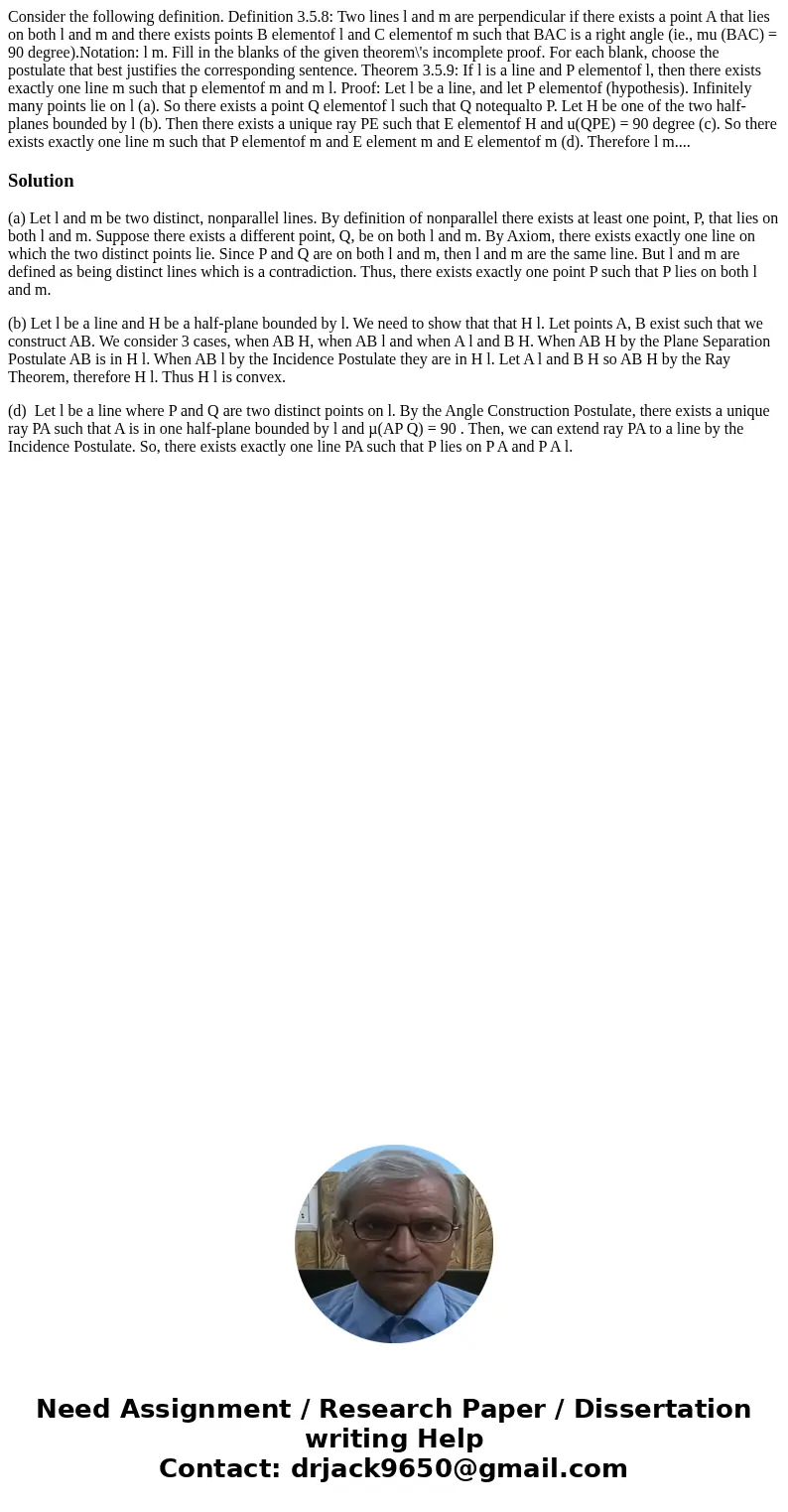Consider the following definition Definition 358 Two lines l
Solution
(a) Let l and m be two distinct, nonparallel lines. By definition of nonparallel there exists at least one point, P, that lies on both l and m. Suppose there exists a different point, Q, be on both l and m. By Axiom, there exists exactly one line on which the two distinct points lie. Since P and Q are on both l and m, then l and m are the same line. But l and m are defined as being distinct lines which is a contradiction. Thus, there exists exactly one point P such that P lies on both l and m.
(b) Let l be a line and H be a half-plane bounded by l. We need to show that that H l. Let points A, B exist such that we construct AB. We consider 3 cases, when AB H, when AB l and when A l and B H. When AB H by the Plane Separation Postulate AB is in H l. When AB l by the Incidence Postulate they are in H l. Let A l and B H so AB H by the Ray Theorem, therefore H l. Thus H l is convex.
(d) Let l be a line where P and Q are two distinct points on l. By the Angle Construction Postulate, there exists a unique ray PA such that A is in one half-plane bounded by l and µ(AP Q) = 90 . Then, we can extend ray PA to a line by the Incidence Postulate. So, there exists exactly one line PA such that P lies on P A and P A l.

 Homework Sourse
Homework Sourse